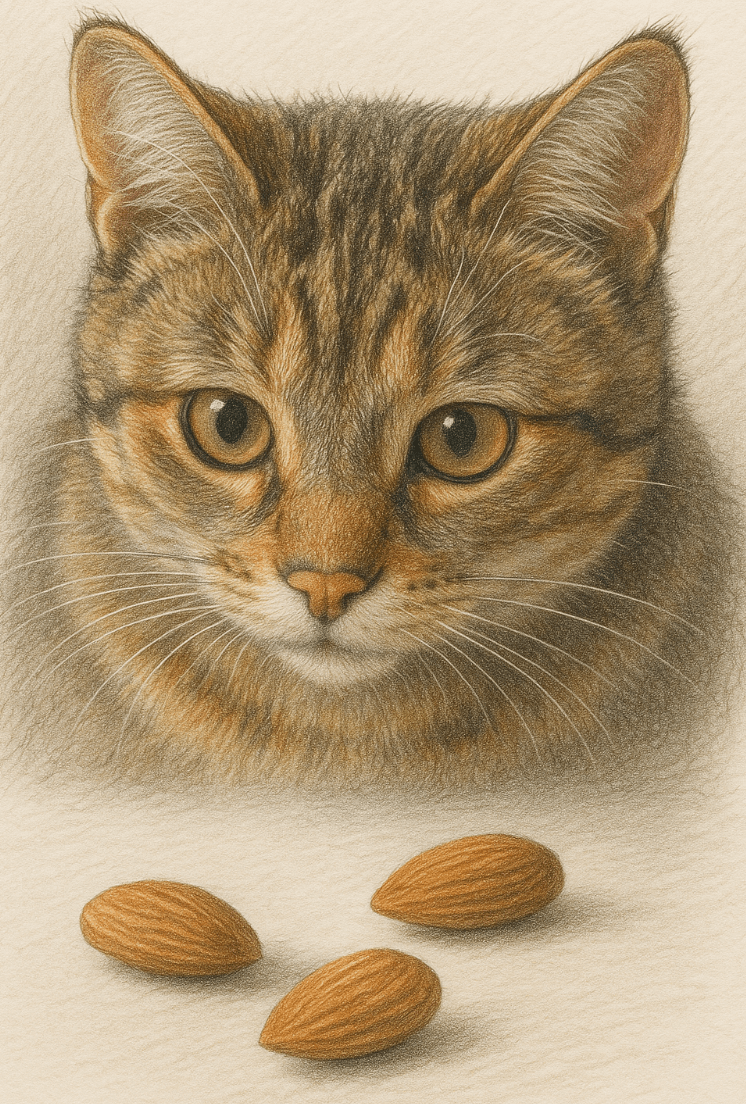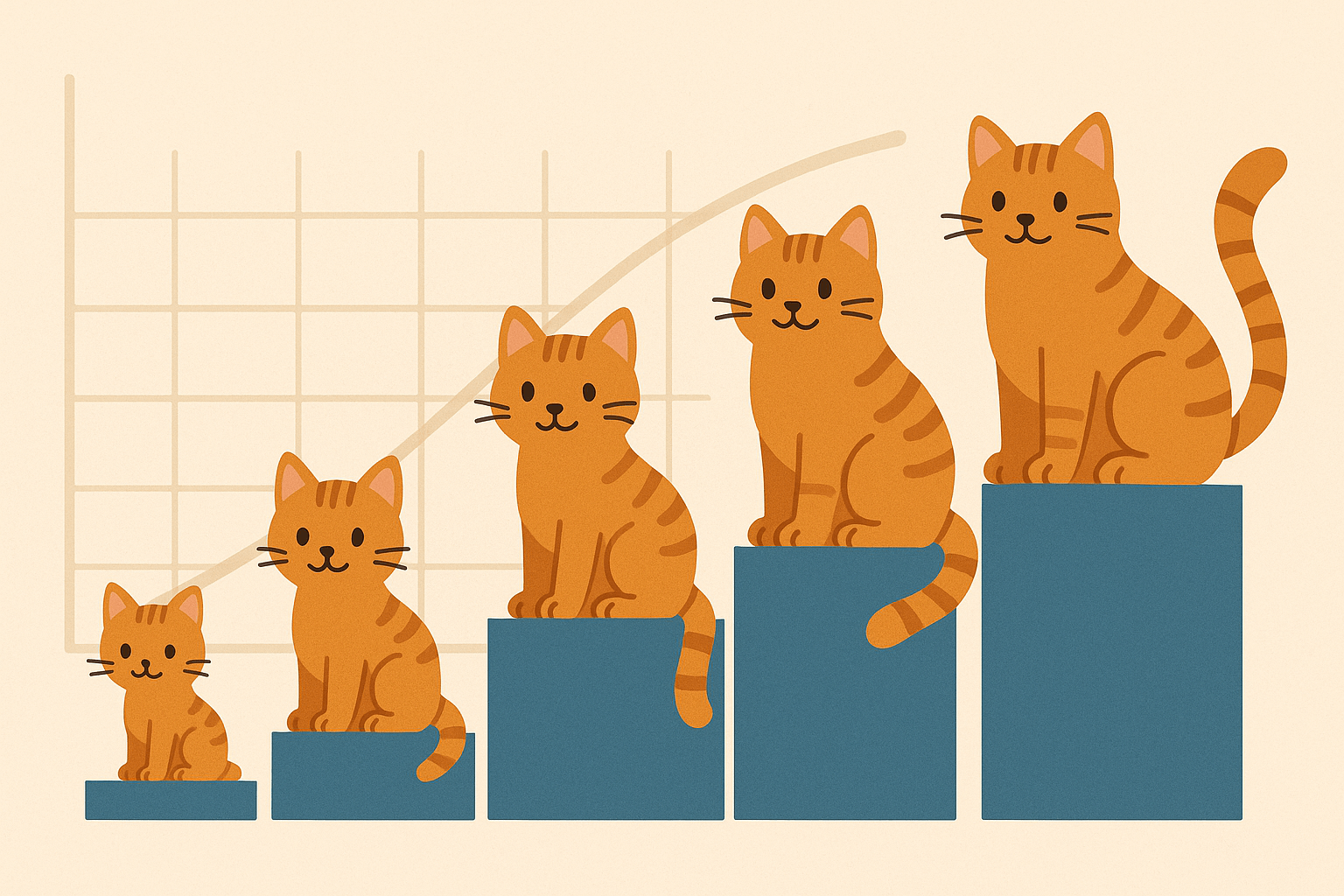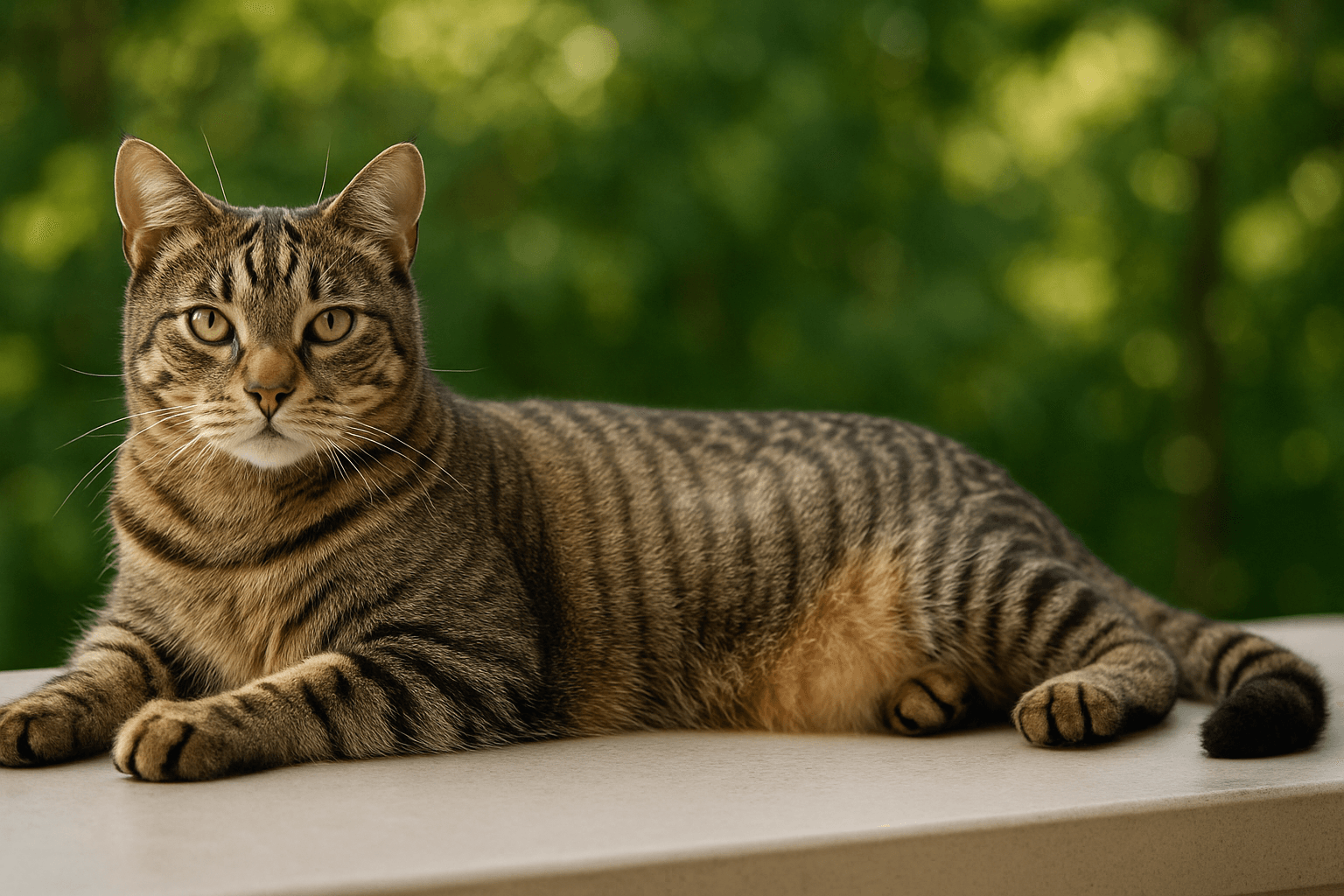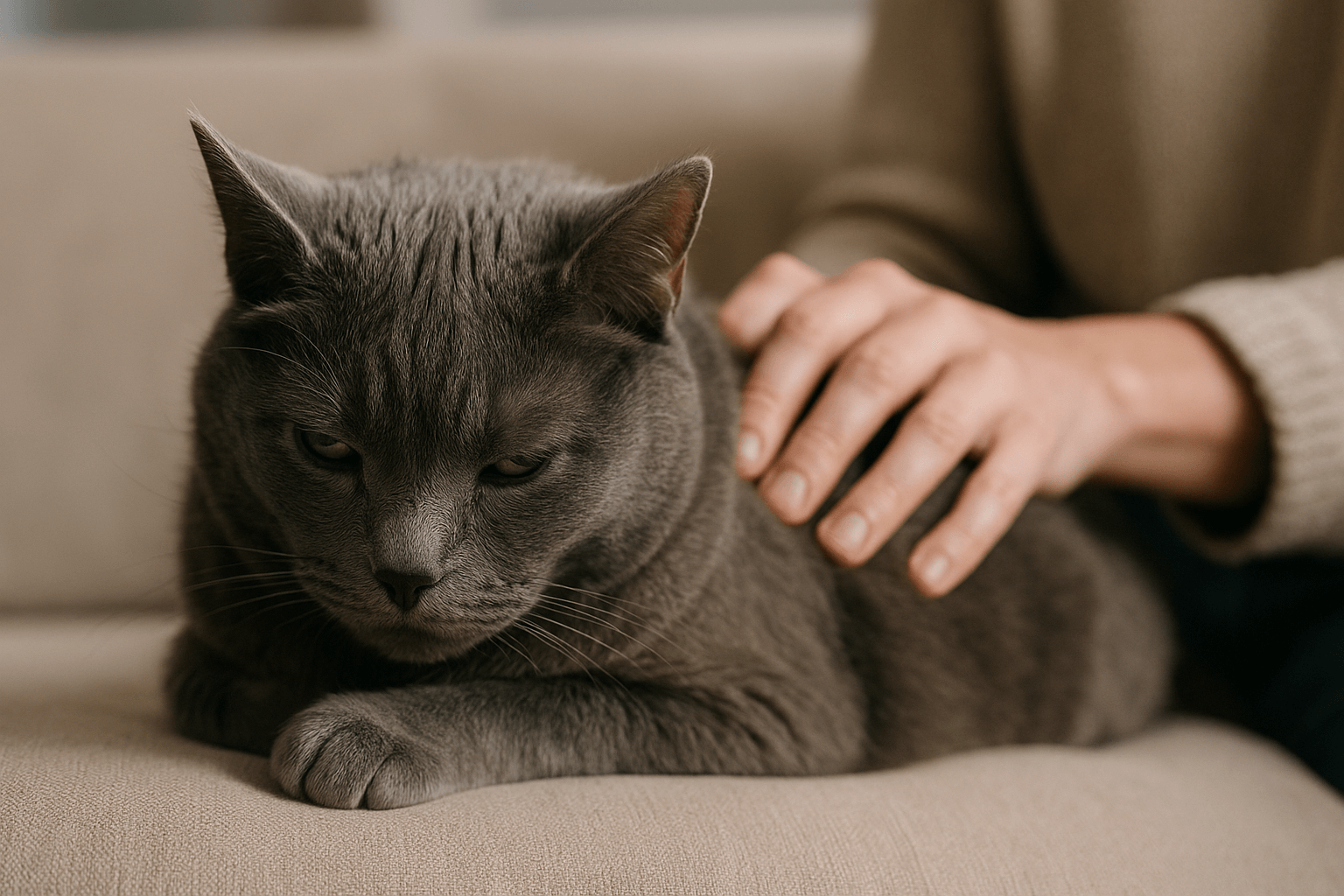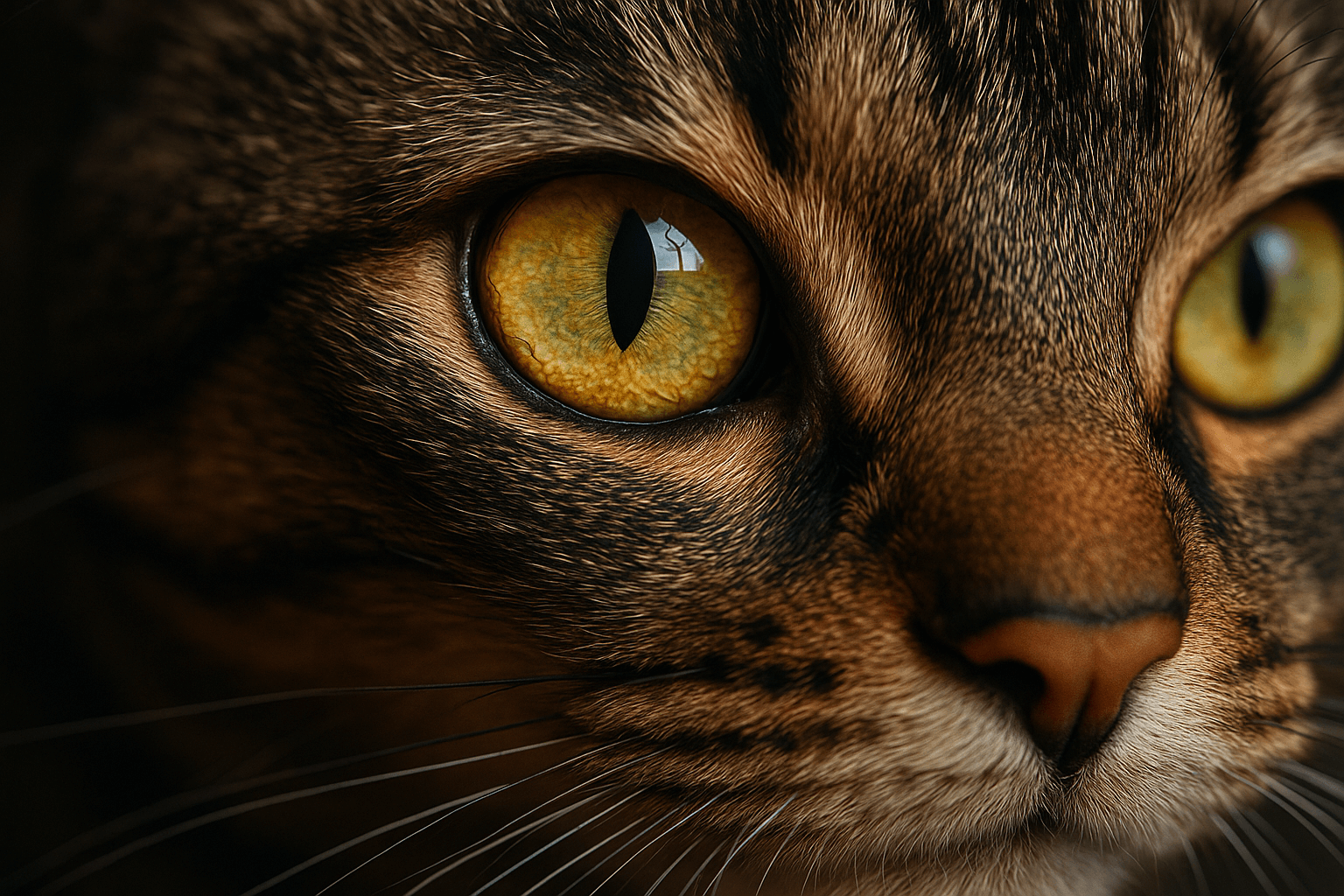Can Cats Eat Almonds?
When it comes to feeding our feline friends, many pet owners wonder whether certain human foods are safe for cats. Almonds, a popular snack for humans, often raise questions about their suitability for cats. While almonds aren’t toxic in the same way that chocolate or onions are, they still pose potential risks that every cat owner should be aware of. Understanding the effects of almonds on cats’ digestive systems and overall health is crucial before offering them as a treat. In this blog post, we’ll explore everything you need to know about cats and almonds, including the dangers, precautions, and safer alternatives to keep your furry friend healthy and happy.
Potential Risks of Feeding Almonds to Cats
Although almonds aren’t highly toxic to cats, they can still cause several health issues if consumed. These risks make it important to exercise caution when considering giving almonds to your cat.
Digestive Upset:
Almonds are high in fat and fiber, which can upset a cat’s sensitive stomach, leading to vomiting or diarrhea.Choking Hazard:
Whole almonds are small and hard, posing a choking risk, especially for smaller cats or those prone to gulping food.Cyanide Risk (Bitter Almonds):
Bitter almonds contain cyanogenic glycosides, which release cyanide when ingested. Even small amounts can be harmful to cats.High Fat Content:
The high fat content in almonds can lead to pancreatitis, a painful and potentially life-threatening condition in cats.Salted or Flavored Varieties:
Salted, sweetened, or flavored almonds can cause sodium toxicity or sugar-related health problems in cats.
These risks highlight why almonds are best avoided as a snack for your cat. Always prioritize their safety over curiosity or convenience.
Signs Your Cat May Have Eaten Almonds
If your cat accidentally consumes almonds, it’s important to recognize the symptoms of potential issues early. Watch for these warning signs to act quickly if something goes wrong.
Vomiting or Diarrhea:
These are common symptoms of digestive upset caused by the high fat and fiber content in almonds.Lethargy or Weakness:
A sudden lack of energy may indicate that your cat is experiencing discomfort or toxicity.Excessive Drooling:
Drooling could signal irritation or an allergic reaction to the almonds.Difficulty Breathing:
This could indicate cyanide poisoning from bitter almonds, requiring immediate veterinary attention.Abdominal Pain:
Signs of pain, such as restlessness or meowing excessively, may suggest pancreatitis or intestinal blockage.
Recognizing these signs early allows you to seek veterinary care promptly, preventing further complications.
Check this guide 👉Can Cats Eat Pepperoni? Best 7 Expert Tips!
Check this guide 👉Can Cats Eat Pistachios? Best 7 Expert Tips!
Check this guide 👉Can Cats Eat Cherries? Best 7 Expert Tips!
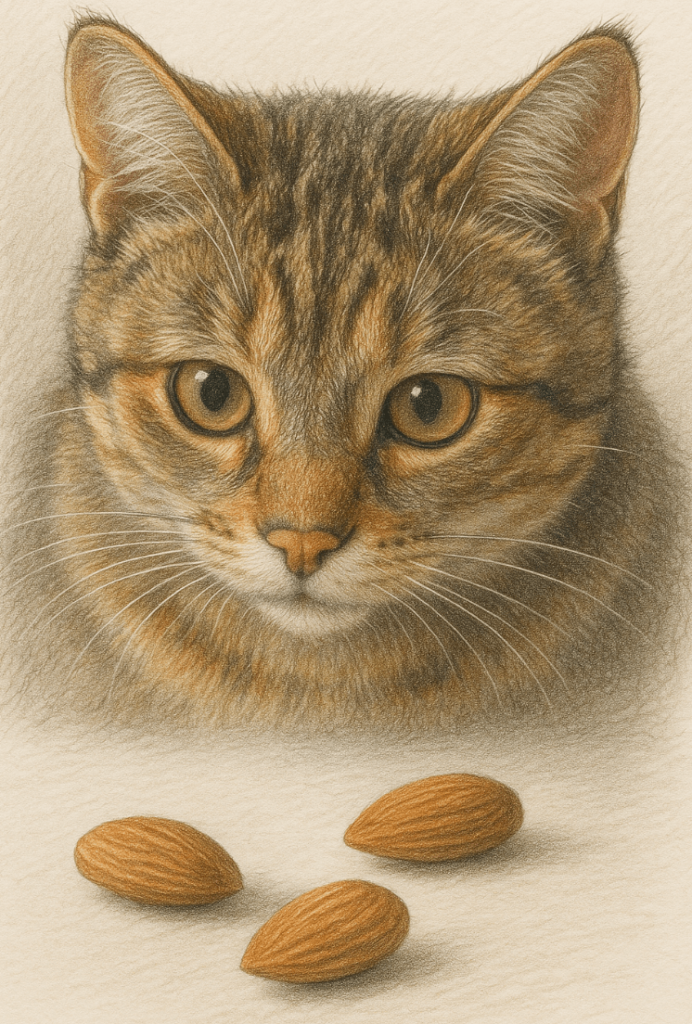
Safe Alternatives to Almonds | Risks of Unsafe Human Foods |
|---|---|
Cooked chicken (plain, unseasoned) | Chocolate (toxic to cats) |
Small pieces of banana | Onions and garlic (cause anemia) |
Pumpkin puree (unsweetened) | Grapes and raisins (kidney damage) |
Blueberries (in moderation) | Alcohol (highly toxic) |
Cat-safe treats designed for felines | Salted snacks (lead to sodium toxicity) |
How to Safely Introduce New Foods to Your Cat
If you’re curious about expanding your cat’s diet beyond their regular food, it’s essential to introduce new foods carefully. Here are some tips to ensure their safety and well-being.
Consult Your Veterinarian First:
Always check with your vet before offering any new food to your cat, especially human snacks like almonds.Start with Small Portions:
If approved by your vet, introduce tiny amounts of the new food to monitor your cat’s reaction.Avoid Seasonings or Additives:
Plain, unseasoned foods are safest for cats, as spices, salt, and sugar can harm their health.Monitor for Adverse Reactions:
Watch for signs of digestive upset, allergies, or other issues after introducing a new food.Stick to Cat-Specific Treats:
Commercial cat treats are formulated to meet feline nutritional needs and are a safer option than human snacks.
By following these guidelines, you can minimize risks and ensure your cat enjoys a balanced and healthy diet.
Benefits of a Balanced Diet for Cats
A balanced diet is essential for maintaining your cat’s health and happiness. Understanding the importance of proper nutrition helps you make informed decisions about what to feed your feline friend.
Improved Digestion:
High-quality cat food supports healthy digestion and reduces the risk of gastrointestinal issues.Stronger Immune System:
Proper nutrition strengthens your cat’s immune system, helping them fight off illnesses.Healthy Weight Maintenance:
A balanced diet prevents obesity, which can lead to serious health problems like diabetes and arthritis.Shiny Coat and Healthy Skin:
Nutrient-rich food promotes a glossy coat and reduces skin irritations or dryness.Longer Lifespan:
Good nutrition contributes to overall longevity, ensuring your cat stays healthy for years to come.
Prioritizing a balanced diet ensures your cat thrives and avoids unnecessary health complications.
Common Mistakes to Avoid When Feeding Cats Human Food
Feeding cats human food can be tempting, but it’s important to avoid mistakes that could endanger their health. Here are some pitfalls to watch out for.
Offering Foods with Additives:
Spices, salt, and sugar can harm your cat’s delicate system. Stick to plain, unseasoned foods.Ignoring Portion Sizes:
Even safe foods can cause problems if given in large quantities. Always offer small portions.Assuming All “Natural” Foods Are Safe:
Just because a food is natural doesn’t mean it’s safe for cats. Research thoroughly before sharing.Leaving Food Unattended:
Curious cats may sneak bites of unsafe foods left within reach. Store snacks securely.Skipping Veterinary Advice:
Always consult your vet before introducing new foods to avoid unintended consequences.
Avoiding these mistakes ensures a safer and healthier experience for your cat.
Alternatives That Mimic the Texture of Almonds
If you’re looking for snacks that resemble almonds in texture but are safer for cats, there are plenty of alternatives to consider.
Crunchy Cat Treats:
Specially formulated crunchy treats satisfy your cat’s desire for texture without the risks associated with almonds.Freeze-Dried Meat Pieces:
These treats provide a satisfying crunch and are packed with protein, aligning with your cat’s dietary needs.Small Pieces of Carrot (Cooked):
Cooked carrots are soft enough to chew and offer a mild crunch, though they should be given sparingly.Cat Grass:
Cat grass satisfies chewing urges and provides a safe, edible option for curious felines.Edible Chew Toys:
Designed for cats, these toys offer a fun and safe way to engage their teeth and gums.
These alternatives allow you to cater to your cat’s instincts while keeping them safe.
Understanding Your Cat’s Natural Instincts Around Food
Cats are naturally drawn to certain textures and flavors, often mimicking behaviors seen in the wild. Understanding their instincts helps explain their fascination with foods like almonds.
Hunting Behavior:
Wild cats chew on bones and tough materials, so domestic cats may seek similar textures in household items.Curiosity and Exploration:
Cats use their mouths to explore new objects, making them likely to nibble on unfamiliar foods.Nutrient Seeking:
Cats instinctively crave nutrients found in animal-based proteins, which almonds lack entirely.Playful Interaction:
Chewing on small objects can serve as a form of play, fulfilling their need for mental stimulation.Territorial Marking:
Chewing or gnawing on objects can sometimes be a way for cats to assert ownership or relieve stress.
By recognizing these behaviors, you can better address your cat’s needs in a safe and controlled manner.
Frequently Asked Questions About Cats and Almonds
Are almonds toxic to cats?
While not highly toxic, almonds can cause digestive upset, choking hazards, or pancreatitis due to their high fat content.
What should I do if my cat eats almonds?
Monitor your cat for symptoms like vomiting, diarrhea, or lethargy. Contact your vet immediately if you notice any adverse reactions.
Can cats eat almond butter?
Almond butter is not recommended due to its high fat and calorie content, which can upset your cat’s stomach.
Are there any nuts safe for cats?
Most nuts are unsafe for cats due to their size, fat content, or potential toxicity. It’s best to avoid all nuts unless specifically approved by a vet.
Why do cats have such sensitive stomachs?
Cats are obligate carnivores with specific dietary needs, making them more susceptible to digestive issues when fed inappropriate foods.
Prioritizing Your Cat’s Health When It Comes to Almonds
While almonds may seem like a harmless snack for humans, they pose significant risks to cats that outweigh any potential benefits. From digestive upset to choking hazards and even cyanide poisoning, the dangers make almonds an unsuitable choice for feline consumption. By understanding these risks and focusing on a balanced, species-appropriate diet, you can ensure your cat stays healthy, happy, and thriving. Remember, your cat relies on you to make the best dietary choices for them—so always prioritize their well-being above all else.
Cat Weight by Age: Best 7 Expert Tips! Discover expert advice on monitoring your cat’s weight, understanding age-related changes, and ensuring a healthy, happy feline companion throughout their life.
Understanding Tabby Cat Size: Best 7 Expert Tips! Learn how big tabby cats get, growth factors, and how to keep your feline healthy and happy.
Understanding Cat Grief Symptoms: Best 7 Expert Tips! Learn to identify and support your cat through grief with expert advice on behavioral changes, physical signs, and healing strategies for a healthier bond.
Understanding Cat Eye Language: Best 7 Expert Tips! Decode your cat’s emotions, build trust, and ensure their well-being by mastering the art of feline eye communication.

